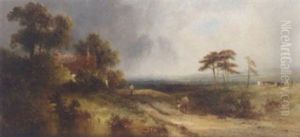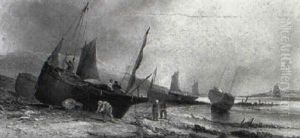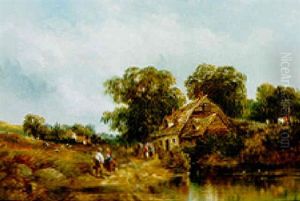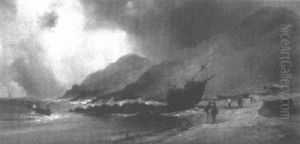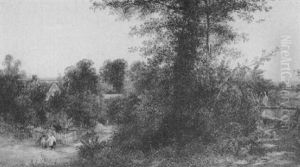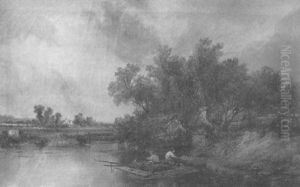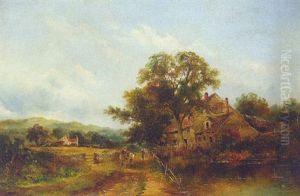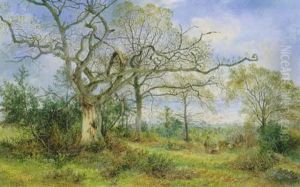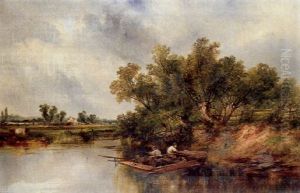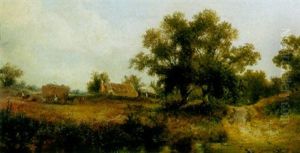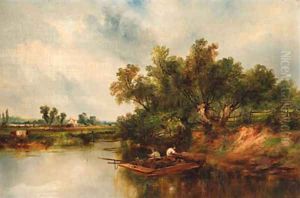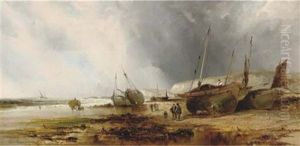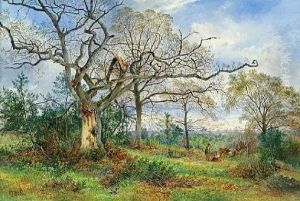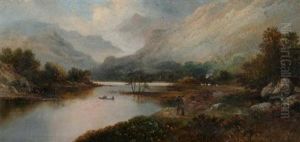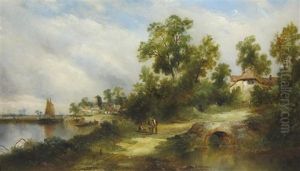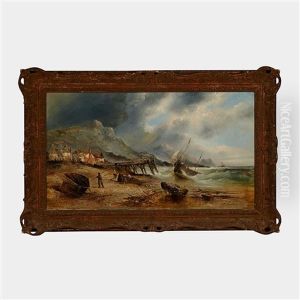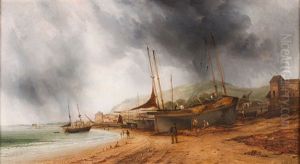William Archibald Wall Paintings
William Archibald Wall was a British artist known primarily for his contributions to the world of etching and printmaking. Born in 1881, Wall's artistic career was marked by his keen observation and ability to capture the essence of British rural life, landscapes, and architectural subjects. His work is characterized by a meticulous attention to detail and a masterful use of line, which earned him a significant place among early 20th-century British printmakers.
Wall's education and early career were deeply influenced by the artistic movements of his time, particularly the etching revival of the late 19th and early 20th centuries. This period saw a renewed interest in etching as a serious and expressive form of art, championed by artists like James McNeill Whistler and Francis Seymour Haden. Wall embraced this medium with enthusiasm, developing a style that balanced traditional techniques with his personal artistic vision.
Throughout his career, Wall exhibited widely and was involved with several artistic societies, which played a crucial role in the promotion and appreciation of etchings as fine art. His works were appreciated for their technical skill and their ability to evoke the atmosphere and spirit of the British countryside and its heritage. Despite the prominence of modernist movements that overshadowed more traditional techniques like etching, Wall remained committed to his craft, contributing to the preservation and continuation of etching techniques through his teaching and mentorship of younger artists.
William Archibald Wall's legacy is preserved in the collections of various British institutions, where his etchings continue to be appreciated for their beauty and technical excellence. His death in 1955 marked the end of a career that had spanned over five decades, during which he had made significant contributions to the British art scene, particularly in the realm of printmaking.
